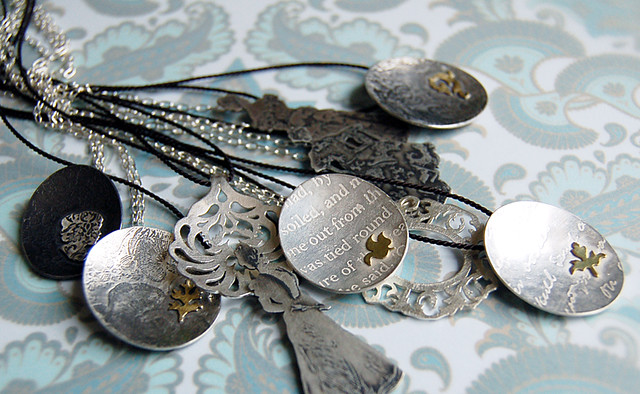Jewelry has the unique peculiarity of having been created with
the distinct purpose of adorning the body. Yes, there are items which
have dual purposes, like watches (and medical or military identification
tags), and there are items like belts and buckles which would
technically be known as accessories, but items of jewelry are there
expressly to be enjoyed for their decorative properties. Also, the more
ornate such a piece of jewelry is, the more it can be seen as a symbol
of the wearer's wealth or status.
Faster is not always better
It is no wonder that people throughout the ages have been prepared to spend large amounts of money on items of jewelry that are unique. The problem, however, arises with the mass manufacturing of jewelry by using machinery to expedite the process. The result of such a process is objects of jewelry which, although still expensive because of the materials that have been used, like gold and silver set with precious gemstones, are no longer one of a kind. Why would anyone be prepared to pay top dollar prices for items which they might see adorning the hands or necks of someone else as well?
Where did it all begin?
Traditionally, all jewelry was handmade. The earliest adornments were made from shells or stones and pieces of bark. Later, as people became skilled at creating their own beads, these were extensively used as ornamentations for necks and arms. In time the craft of jewelry making was usually undertaken by gold or silver smiths, who often gained their expertise at the hands of a father or other kinsman who was skilled at this occupation and would pass on many of his 'trade secrets' to be kept and passed on in the family.
Handmade says 'Made with Care'
The most exciting thing about handmade jewelry is that it is unique. No craftsman worth his salt is going to turn out pieces that are the same. For this reason then, one is prepared to spend more. In addition, these distinctive items are generally more hard-wearing than those that are mass produced. A jeweler who makes items of jewelry individually is one who loves his craft and this devotion will be evident each piece. If you purchase handmade jewelry you will almost always be getting better quality items than those you buy over the counter. You might also be supporting the work of an emerging artist, and who knows, the piece you buy may become very valuable as that artist gains popularity.
Faster is not always better
It is no wonder that people throughout the ages have been prepared to spend large amounts of money on items of jewelry that are unique. The problem, however, arises with the mass manufacturing of jewelry by using machinery to expedite the process. The result of such a process is objects of jewelry which, although still expensive because of the materials that have been used, like gold and silver set with precious gemstones, are no longer one of a kind. Why would anyone be prepared to pay top dollar prices for items which they might see adorning the hands or necks of someone else as well?
Where did it all begin?
Traditionally, all jewelry was handmade. The earliest adornments were made from shells or stones and pieces of bark. Later, as people became skilled at creating their own beads, these were extensively used as ornamentations for necks and arms. In time the craft of jewelry making was usually undertaken by gold or silver smiths, who often gained their expertise at the hands of a father or other kinsman who was skilled at this occupation and would pass on many of his 'trade secrets' to be kept and passed on in the family.
Handmade says 'Made with Care'
The most exciting thing about handmade jewelry is that it is unique. No craftsman worth his salt is going to turn out pieces that are the same. For this reason then, one is prepared to spend more. In addition, these distinctive items are generally more hard-wearing than those that are mass produced. A jeweler who makes items of jewelry individually is one who loves his craft and this devotion will be evident each piece. If you purchase handmade jewelry you will almost always be getting better quality items than those you buy over the counter. You might also be supporting the work of an emerging artist, and who knows, the piece you buy may become very valuable as that artist gains popularity.

No comments:
Post a Comment